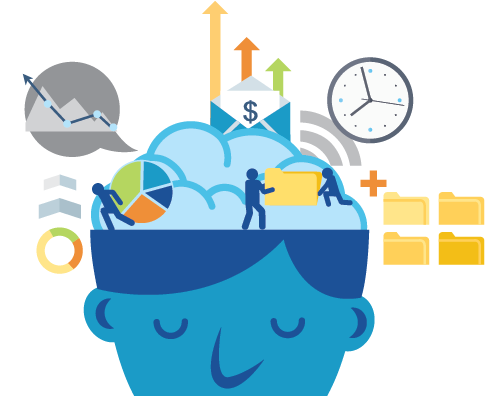As children, we’re taught to not judge a book by its cover.

As adults, we know that until we walk a mile in someone else’s shoes, we can’t fully understand their experience.
Making assumptions can lead to trouble. So why are many employers making assumptions about what their employees want and value when it comes to benefits? The answer – and more importantly, what to do about it – is critical to successfully navigating today’s benefits landscape.
When you assume…
As HR professionals, we have to make a number of decisions about offerings based on what our employees want…or, more accurately in most cases, what we think they want. It’s with the best intentions, of course, and it’s actually symptomatic of a macro trend in leadership: many times, leaders are so committed to what they think is right for their organization, a project or customer that they become resistant to persuasive arguments – or hard evidence – otherwise, to the detriment of the group they’re leading.
Al Pittampalli, the bestselling author of Persuadable: How Great Leaders Change Their Minds to Change the World, says that the most powerful leaders, however, are those who are willing to challenge their beliefs and assumptions. “Research suggests that individuals who have a cognitively flexible style—that is, people who are skeptical of their own beliefs and are willing to change their mind when they encounter new evidence—make more accurate predictions,” Pittampali points out. “People who are actively willing to change their minds help ensure that the best ideas prevail. That’s an incredible service to employees, businesses, voters, and society as a whole.”
(Note: if you’re interested in learning more about Al and his approach to leadership, consider signing up for Businessolver’s Vision 20/16 user conference, where Al will be our event speaker, and you’ll get opportunities to learn from experts and peers about current trends in the benefits landscape and best practice approaches and technologies to manage the most common current pain points).
Back to assumptions about benefits.
Often, benefits administrators end up selecting offerings by taking stock of year-over-year data and common industry opinions on what’s best versus actually gathering direct feedback from employees. The end result is loosely informed benefits offerings based on assumptions, including:
- Employees are distanced from their benefits: It’s often assumed that employees view their benefits as a cost separate from their housing, food and other living expenses. The reality is that increasingly, employees are taking a one-wallet approach to their expenses, meaning they see all living costs – including healthcare, retirement, home insurance, etc. – as a part of their daily budget. In fact, 81 percent of employees would be more comfortable if all of their personal assets were included in their workplace benefits planning.
- Employees define wellness solely as a health issue: As employees are developing a more holistic view of their wallets, they’re doing the same with wellness. Following the recent economic downturn, employees are realizing that their financial health is directly linked to their emotional and physical health, and that the three are interconnected.
- Age determines interest in benefits: Employees older than 40 are primarily concerned about retirement, and employees younger than 40 are focused on accident coverage…right? Not so. A recent study by the Life Insurance and Market Research Association found that only 33 percent of employers thought retirement was important to employees younger than 40; however, in actuality, 93 percent of employees younger than 40 said retirement was incredibly important to them when choosing their benefits.
Why do we assume?
Why do well-meaning, well-educated HR professionals make these types of assumptions about how their employees approach the benefits selection process? The answer is three-fold:
- It’s always been done that way: A holistic approach to benefits offerings is relatively new. Traditional, segmented offerings are traditional, rooted in historical data and familiar to company leadership.
- It’s scary: Along with the psychology of assumptions, there’s the psychology of fear. Changing the way benefits are offered can be overwhelming – it’s not just adding vendors and changing processes; it’s a fundamental shift in the way benefits administrators, as well as senior leadership, think about benefits. Fear is a powerful motivator to keep things the same, and can prevent us from evolving to do what might be best for our employees.
- It’s easy: Between ACA reporting, multigenerational workforces and a crowded vendor market, today’s HR landscape is incredibly complex. We’re continually told about vendors and solutions that can “make it easy,” when in reality, we need someone to help us make it right. At Businessolver, a recent customer survey found that 94 percent of surveyed benefits administrators said getting benefits administration right for employees was more important than making the process easy. Making assumptions and finding solutions that can simplify the process is easy. Digging into the data and finding the right partner is harder, but yields the greatest results in the long run.
Moving past assumptions
So how can we stop making assumptions? Smart organizations are starting to realize that for employees to be truly engaged in their benefits, offerings must be tailored and account for what they value most throughout different points in their lives.
Data including past annual enrollment data, current benefits usage and external insights about specific demographics and geographies, can all help paint a clear picture of population and wellness trends for benefits administrators. But data is only one part of the picture. Employee surveys, focus groups and conversations have to tell the story that data simply can’t. The combination of anecdotal insights and statistical data can create a complete canvas that accurately illuminates what your employees need and value most when it comes to benefits.
This is part of an ongoing series focused on a “one wallet” approach to benefits. Stay tuned for our next post, or learn more about this approach by watching our on-demand webinar, “One Wallet: The Evolution of Decision Support to Holistic Recommendation Engine.”


.png)